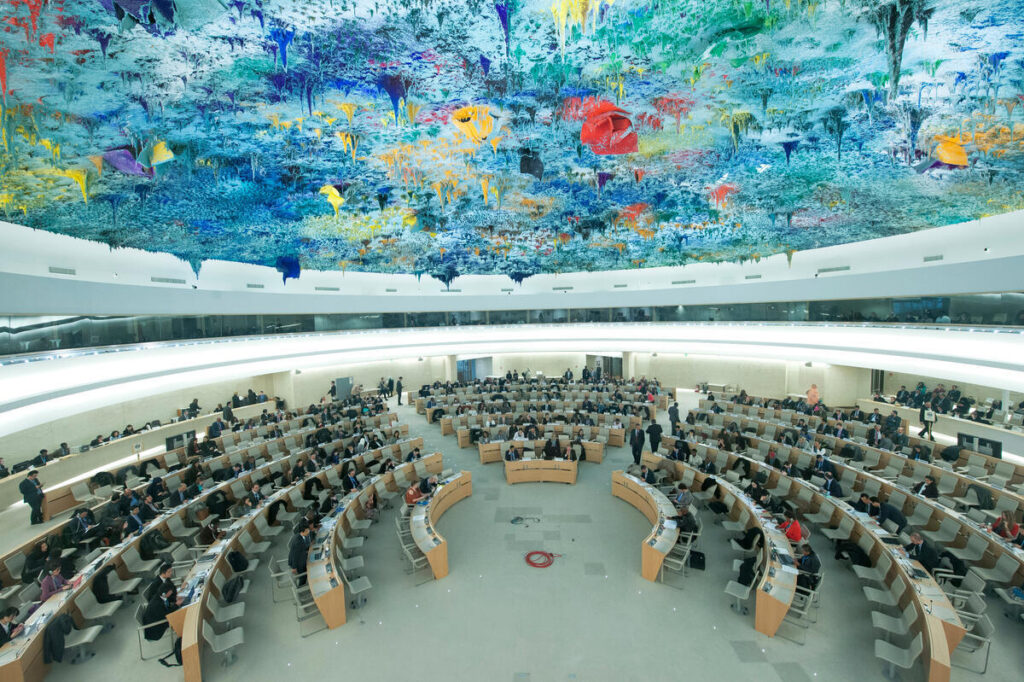UPDATE: Least Developed Countries receive strong support to achieve Sustainable Development Goals
Doha/New York, March 9 – The U.N. conference on the Least Developed Countries ended with member states committing to measures to deliver on the Doha Program of Action, a 10-year plan to put the world’s 46 most vulnerable countries back on track to achieving the Sustainable Development Goals (SDGs).
Bold commitments at the conference marked a transformative turning point for the world’s poorest countries, whose development has been hindered by crises including COVID-19, climate change and deepening inequalities, the U.N said in a press release.
“Achieving the Sustainable Development Goals in the Least Developed Countries is a litmus test for achieving the 2030 Agenda writ large, including by ensuring that no one — and no LDC — is left behind” said UN Deputy Secretary-General Amina Mohammed. “That is why the Doha Program of Action must be seen as a vehicle for SDG Acceleration.”
Under the theme ‘From Potential to Prosperity’ the conference aimed to drive transformational change to positively affect the 1.2 billion people who live in the LDCs.
“The commitments made this week are a true embodiment of global solidarity and partnership and will pave the way for a new era of international cooperation,” said Rabab Fatima, Secretary General of the Conference and UN High Representative for the Least Developed Countries, Landlocked Developing Countries and Small Island Developing States.
“This will result in more of the Least Developed Countries achieving the goal of graduation and a more prosperous and sustainable future,” she said.
5,000 participants attended LDC5, including 47 Heads of State or Government and 130 Ministers and Vice-Ministers. They called for developed countries to urgently provide the most vulnerable countries with the assistance they need to drive socio-economic and environmental development. Corporate leaders together with civil society, youth and other partners shared plans, innovations, and recommendations in several areas: from enhancing the participation of LDCs in international trade and regional integration to addressing climate change, strengthening global partnerships, supporting graduation, and leveraging the power of science, technology, and innovation.
The Doha Political Declaration, adopted March 9, reinforces the international community’s commitment to the Doha Program of Action.
Commitments
The Conference has presented a unique opportunity to translate the vision of the Doha Program into tangible results with countries and stakeholders showcasing a host of commitments. These commitments range from improving biodiversity and tackling malnutrition to resilience building in the LDCs.
Qatar announced a financial package of $60 million: $10m to support the implementation of the Doha Program of Action and $50 million to help build resilience in the LDCs.
Germany dedicated €200 million in new money in 2023 for financing for least developed countries.
Canada announced $59 million to deliver Vitamin supplements in 15 LDCs and ecosystem conservation in Burkina Faso.
The EU Commission announced cooperation agreements advancing sustainable investments in Africa totaling more than €130 million of investment.
Finland announced an annual event called the United Nations LDC Future Forum in Helsinki, with the Office of the UN High Representative for the Least Developed Countries, Landlocked Developing Countries and Small Island Developing States – OHRLLS –, to ensure the latest thinking and research is being put to work to ensure progress on the most vulnerable states.
The Green Climate Fund announced a new project to give $80 million in equity to offer green guarantees to business in LDCs and bring down the cost of capital.
The United Nations World Tourism Organization, announced a new €10 million Tourism for Development Fund for LDCs, supported by TUI Care Foundation, that will invest by 2030 to support sustainable tourism in LDCs as a key driver of development.
The government of Kazakhstan pledged $50,000 to continue their work supporting the most vulnerable member states of the United Nations.
The government of the Kingdom of Saudi Arabia announced a major new loan package for the Least Developed Countries.
The following 46 countries are listed as LDCs as of March 2023:
Africa (33): Angola, Benin, Burkina Faso, Burundi, Central African Republic, Chad, Comoros, Democratic Republic of the Congo, Djibouti, Eritrea, Ethiopia, Gambia, Guinea, Guinea-Bissau, Lesotho, Liberia, Madagascar, Malawi, Mali, Mauritania, Mozambique, Niger, Rwanda, Sao Tome and Principe, Senegal, Sierra Leone, Somalia, South Sudan, Sudan, Tanzania, Togo, Uganda, and Zambia.
Asia (9): Afghanistan, Bangladesh, Bhutan, Cambodia, Lao People’s Democratic Republic, Myanmar, Nepal, Timor-Leste and Yemen
Caribbean (1): Haiti.
Pacific (3): Kiribati, Solomon Islands and Tuvalu.
The U.N. said 46 countries are deemed as least developed as they showed the lowest indicators of socio-economic development across a range of indexes. The LDCs are home to about 1.1 billion people, or 14 per cent of the world population and over 75 per cent of them still live in poverty.
According to data from the World Bank, all LDCs have a gross national per capita income (GNI) of below USD$1,018; compare that to almost $71,000 in the United States, $44,000 in France, $9,900 in Turkey and $6,530 in South Africa.
Key LDC5 links
LDC5 Website: https://www.un.org/ldc5/
Doha Programme of Action: https://www.un.org/ldc5/doha-programme-of-action
Doha Political Declaration: https://undocs.org/A/CONF.219/2023/L.1
Media Corner: https://www.un.org/ldc5/news
For more information, contact:
Conor O’Loughlin | LDC5 Spokesperson | conor.oloughlin@un.org
Sharon Birch | UN Department of Global Communications | birchs@un.org
United Nations correspondent journalists – United Nations correspondent journalists – United Nations correspondent journalists – United Nations journalism articles – United Nations journalism articles – United Nations journalism articles – United Nations News – United Nations News – United Nations News










